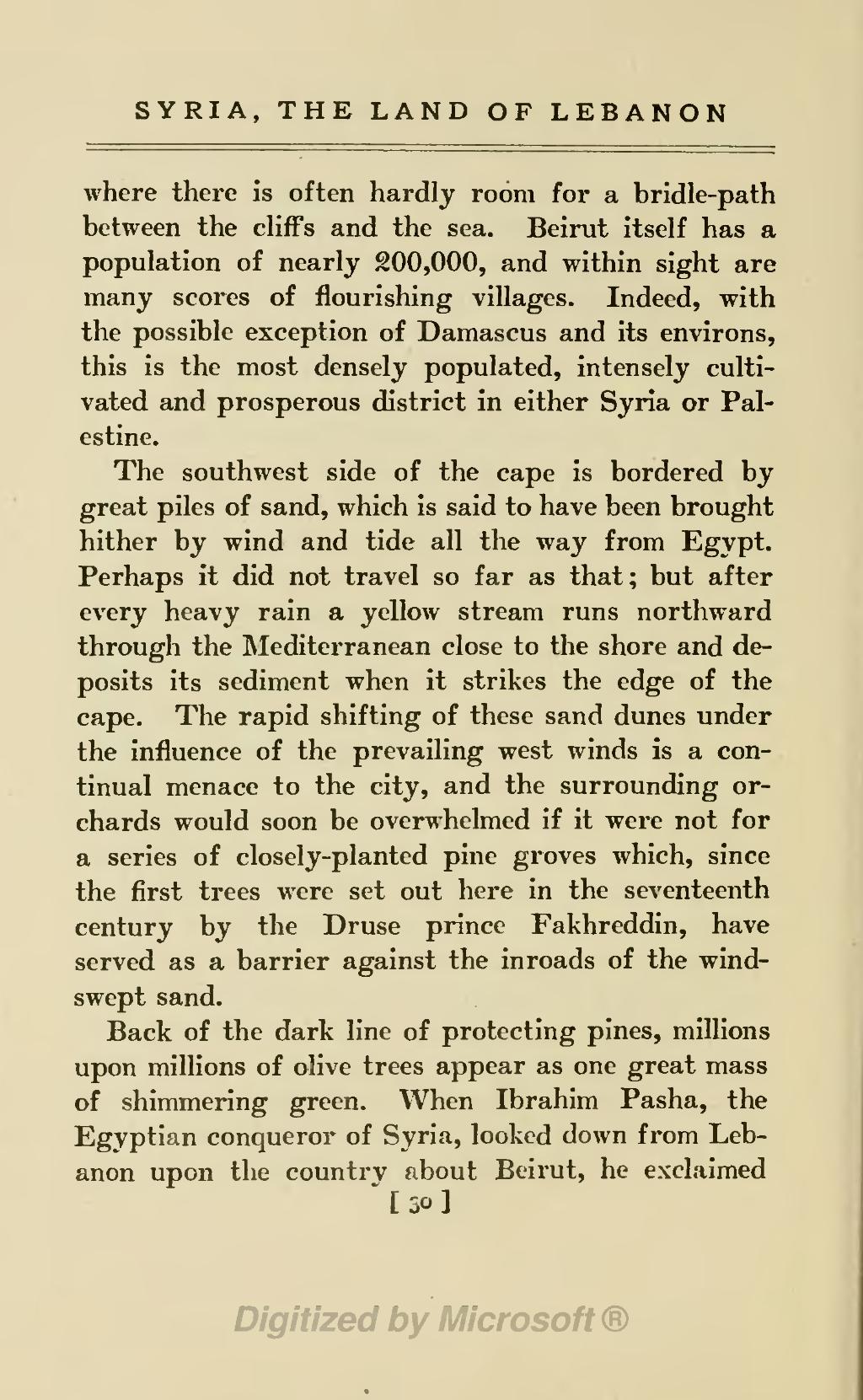SYRIA, THE LAND OF LEBANON
where there is often hardly room for a bridle-path between the cliffs and the sea. Beirut itself has a population of nearly 200,000, and within sight are many scores of flourishing villages. Indeed, with the possible exception of Damascus and its environs, this is the most densely populated, intensely cultivated and prosperous district in either Syria or Palestine.
The southwest side of the cape is bordered by great piles of sand, which is said to have been brought hither by wind and tide all the way from Egypt. Perhaps it did not travel so far as that; but after every heavy rain a yellow stream runs northward through the Mediterranean close to the shore and deposits its sediment when it strikes the edge of the cape. The rapid shifting of these sand dunes under the influence of the prevailing west winds is a continual menace to the city, and the surrounding orchards would soon be overwhelmed if it were not for a series of closely-planted pine groves which, since the first trees were set out here in the seventeenth century by the Druse prince Fakhreddin, have served as a barrier against the inroads of the windswept sand.
Back of the dark line of protecting pines, millions upon millions of olive trees appear as one great mass of shimmering green. When Ibrahim Pasha, the Egyptian conqueror of Syria, looked down from Lebanon upon the country about Beirut, he exclaimed
[ 30 ]
